How Young Activists Got 18-Year-Olds the Right to Vote in Record Time
In 1971, more than 10 million 18– to 20-year-olds got the right to vote thanks to an amendment with bipartisan support
:focal(487x262:488x263)/https://tf-cmsv2-smithsonianmag-media.s3.amazonaws.com/filer/75/e4/75e44ddb-8ad6-4c66-9fb5-f60a9023ab39/opener.jpg)
As the uncertainty over the outcome of the 2020 presidential election sorted itself out, one data point was clear as day: The racially diverse youth vote was “instrumental” in sending former Vice President Joe Biden and Senator Kamala Harris to the White House. According to researchers at Tufts University’s Center for Information and Research on Civic Learning and Engagement (CIRCLE), young voters aged 18-29 preferred the Democratic ticket by a 25-point margin. Their cohort, particularly young people of color, played a key role in “flipping” battleground states including Georgia, Michigan and Pennsylvania, and the estimated youth turnout increased significantly from 2016.
Given such numbers, it’s not surprising that the misbegotten impression holds today that the younger the electorate, the more favorable the electorate for liberals. But the decades-long push to lower the voting age from 21 to 18, which culminated in the 1971 ratification of the 26th Amendment, came about because young Americans of different races, genders and political persuasions came together, taking on an ambivalent and resistant government, to gain the right to vote.
Passed by Congress on March 23 and ratified by the required 38 states by July 1, the amendment became law in 100 days, the fastest route to ratification of any of the 27 amendments to the Constitution. It declared “The right of citizens of the United States, who are eighteen years of age or older, to vote shall not be denied or abridged by the United States or any state on account of age.” Ten million new voters were now enfranchised. Many historians and journalists have attributed the Amendment’s passage to the work of anti-war protesters of the 1960s, who could be conscripted into military service at 18 but could not vote until 21. But the real history is more layered than that.
/https://tf-cmsv2-smithsonianmag-media.s3.amazonaws.com/filer/ca/c2/cac28d10-593b-4421-aaf6-961e0cbe35d0/gettyimages-515574892.jpg)
“It was a perfect storm in many ways,” says Seth Blumenthal, a senior lecturer at Boston University and the author of Children of the Silent Majority: Youth Politics and the Rise of the Republican Party, 1968-1980. Blumenthal notes that the tragedy of Kent State in 1970 had exacerbated nationwide tensions around the generation gap. “America,” he says, “needed a steam valve. All the sides saw ways in which [the youth vote] would be beneficial and work” for them.
The fight to lower the voting age began in earnest decades earlier, in the early 1940s, in response to a different conflict: World War II. Between 1940 and 1942, Congress passed successive Selective Service laws that lowered the military draft age first from 21 to 20, then from 20 to 18 in 1942. The 1942 age limit sparked debate in Congress about the connection between the voting age of 21 and the age of military service, and the fairness of conscripting men into service who could not vote.
“If young men are to be drafted at 18 years of age to fight for their Government,” said Senator Arthur Vandenberg of Michigan as Congress considered his bill to lower the voting age, “they ought to be entitled to vote at 18 years of age for the kind of government for which they are best satisfied to fight.”
Legislators introduced multiple bills into the state and federal legislatures calling for a lower voting age, but despite growing awareness of the issue in public and the endorsement of the cause by First Lady Eleanor Roosevelt, none passed at the federal level.
One obstacle, says Jenny Diamond Cheng, a lecturer at Vanderbilt Law School, was Representative Emanuel Celler, who wielded power in the House Judiciary Committee. He became chair of that committee in 1949 and consistently worked to stop any bills lowering the voting age, which he vehemently opposed.
Another issue: how American culture viewed teens and those in their early 20s, says Rebecca de Schweinitz, a history professor at Brigham Young University working on a book about youth suffrage. Most youth advocates, she says, were adult social reformers focused on creating greater access to secondary education, regulating child labor and providing services like welfare to young people. These reformers did not “talk about young people as independent agents,” who could handle the demands of adulthood, says de Schweinitz. “They talked and thought about them as people who needed to be cared for.”
Youth themselves were also not enthusiastic about gaining the right to vote. Polls, such as one covered in the Atlanta Constitution, showed 53 percent of American high school students opposed the proposal in 1943.
“This ‘caretaking’ understanding of young people and their rights dominated 1940s and 1950s public discourse and policy, making it difficult for Vote 18 allies to discuss eighteen-year-olds as independent contributors to the country” and therefore worthy recipients of the right to vote, explains de Schweinitz in her article “The Proper Age for Suffrage.”
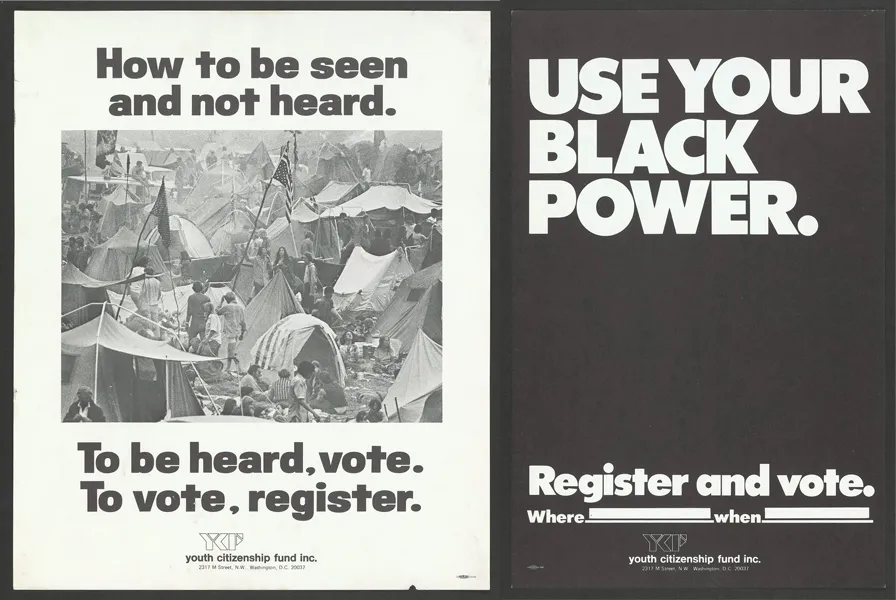
At the state level, however, the push for youth suffrage gained some momentum. Between 1942 and 1944, 31 states proposed lowering the voting age, political scientist Melanie Jean Springer writes in the Journal of Policy History. Most failed, but one succeeded—in August 1943, Georgia governor Ellis Arnall oversaw the ratification of an amendment to Georgia’s state constitution that lowered the voting age from 21 to 18. He invoked what Cheng and other scholars believe was the first use of the slogan “old enough to fight, old enough to vote” by a public official. Georgia would remain the only state to take the plunge for the next 12 years.
The idea simmered on the political backburner throughout the next two decades. In his 1954 State of the Union Address, President Dwight D. Eisenhower spoke in favor of lowering the voting age. By 1960, Kentucky, Alaska and Hawaii had joined Georgia in granting the vote to those under 21 for state and local elections. (Kentucky lowered the voting age to 18 in 1955, and Alaska and Hawaii lowered the voting age to 19 and 20 respectively when they became states in 1959.) In 1963, President John F. Kennedy created the President’s Commission on Registration and Voting Participation to help counter the U.S.’s low voter turnout in comparison to other Western countries like Denmark (at 85.5 percent) and Italy (at 92 percent). The commission recommended solutions such as expanding voter registration dates, abolishing poll taxes, making mail-in absentee voting easier and that “voting by persons 18 years of age should be considered by the states.”
As the U.S. government committed more troops to the war in Vietnam, the “old enough to fight, old enough to vote” slogan re-emerged in Congress and in pop culture with even more force. At the same time, teenagers, who represented the earliest members of the large Baby Boomer generation, heavily involved themselves in political movements like the push for civil rights, campus free speech and women’s liberation. These flashpoints stood front and center in the public consciousness, showcasing the growing power of youth in directing the nation’s cultural conversations.
Politicians “who were supporting a lower voting age in the 1940s and 1950s talked about the potential for young people to be politically engaged. In the late 1960s, they didn’t talk about political potential, because [youth] everywhere” were engaged, says de Schweinitz.
Into the 1960s, more politicians from both sides of the aisle took a public stand in favor of the move. And by 1968, according to a Gallup poll, two-thirds of Americans agreed that “persons 18, 19, and 20 years old should be permitted to vote.”
/https://tf-cmsv2-smithsonianmag-media.s3.amazonaws.com/filer/fd/49/fd494555-73de-4f16-ba2a-b140ac748ca7/gettyimages-515572108.jpg)
Youth suffrage became a unifying cause for diverse political interests, including the NAACP, Young Democrats and Young Republicans. Some groups had lobbied for the cause on their own, but in 1969, the activists seized on the rising tide of youth power in all areas of civil rights and brought their cause to Congress. The coalition enjoyed the support of established unions and lobbying groups, including the United Auto Workers and the National Education Association. The teachers’ union even created specialized advocacy groups for the campaign: Project 18 and the Youth Franchise Coalition.
“They brought this network together and allowed people across the country to share ideas and work together on a national strategy,” says de Schweinitz.
The coalition converged in late April that year for the NAACP-sponsored Youth Mobilization conference in Washington, D.C. Organized by Carolyn Quilloin (now Coleman), who had started her activism work as a teenager protesting segregation in Savannah, Georgia, the gathering brought together 2,000 young people from 33 states to lobby Congress in support of youth voting rights.
It was “a coming out event” for the coalition, says de Schweinitz. Unlike earlier suffrage efforts that lacked grassroots support, the coalition “made visible a range of state committees and organizations where young people were pushing for the right to vote. [They wanted] to change the narrative and show that young people wanted to be full participants.”
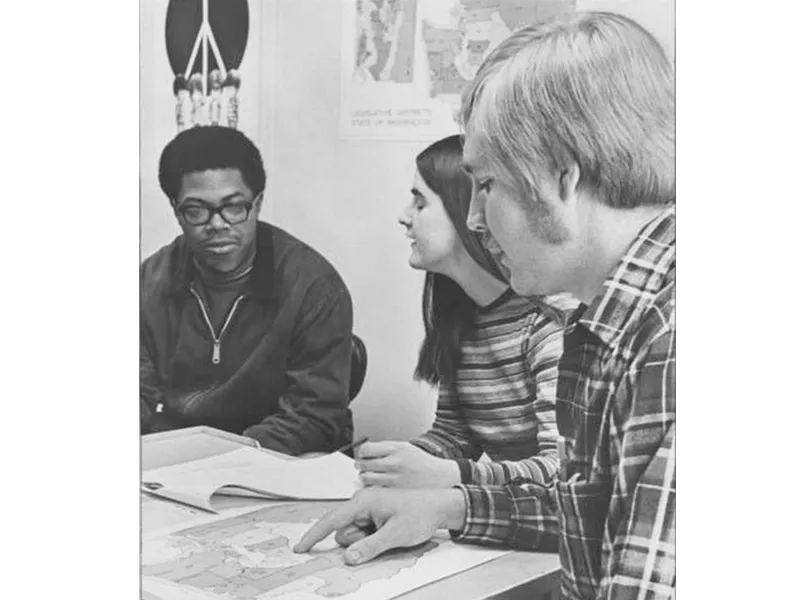
In a forthcoming article in the Seattle University Law Review, Mae C. Quinn, a law professor at the University of the District of Columbia and the director of their Youth Justice and Appeals Project, writes that despite Quilloin’s experience as a leader, her foundational work soon was overshadowed by three young white men lobbying on behalf of the NEA. According to Quinn’s research, the white lobbyists received more press coverage and were often referred to as “leaders” of the national youth voting movement.
“Young black women and teens are historical subjects who don't often get talked about and yet have been very powerful and at the forefront of change,” says Quinn in an interview. “The 26th Amendment is a place where we see that front and center, and it's important for us to remember that.”
Scholars disagree over the extent to which grassroots action on voting propelled the government to act. But following the mobilization, the political wheels began to turn on making youth enfranchisement a reality. According to Blumenthal, the potential capture of the youth electorate appealed to both parties. For Democrats, it offered a chance to expand their voting base, which had suffered when the South defected to the George Wallace campaign in 1968. For Republicans, lowering the voting age offered a way to invite youth participation into the current system while keeping the status quo and preventing more radical unrest.
The Nixon campaign, gearing up for the 1972 election, wanted to send a message that he could calm the generation gap by passing the 26th Amendment, says Blumenthal. “Youth rebellion had become a number one concern across the country, and to send [this] message… fit into Nixon's larger message of law and order.”
This approach was echoed in a 1968 testimony before the Senate Judiciary Committee on the issue from Jack McDonald of the Young Republican National Federation. McDonald said lowering the voting age was a way to give conservative youth a political voice and bust the myth that young people were all disillusioned, violent and radical. “Young America’s is a voice that says, ‘Work a solid day’ far more than it says ‘Take an LSD trip.’ It is a voice that urges us to ‘Build man build’ rather than ‘Burn baby burn,’” he said.
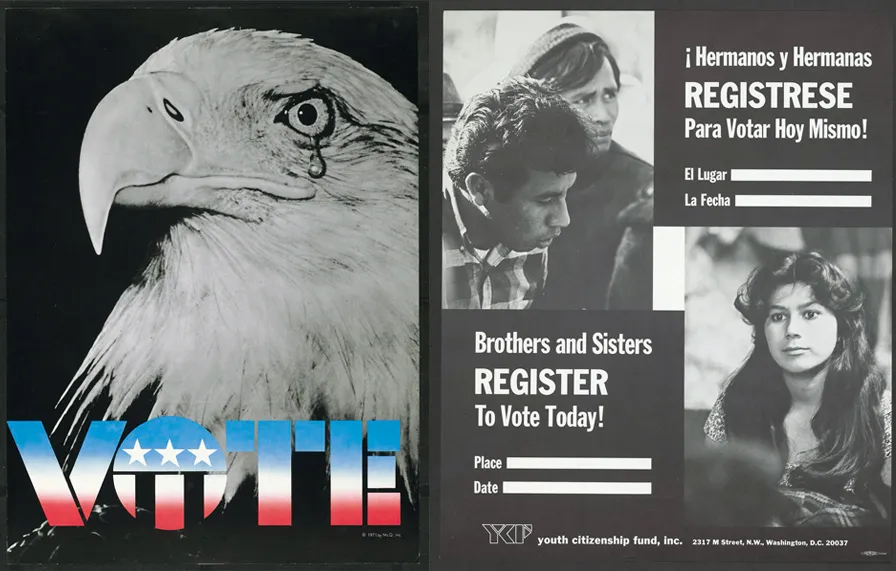
When the committee convened on the issue again in 1970, more members of the coalition spoke in favor of youth suffrage, bolstered by the success of the previous year’s summit. “Many of the problems erupting from my generation today stem from frustration and disillusionment,” said Charles Gonzales, a college student and president of the Student NEA. “We are frustrated with a system that propagandizes the merits of the democratic process… and then postpones meaningful involvement for us in that process.”
In his testimony, James Brown Jr. of the NAACP made an explicit connection between the voting rights of black Americans and those of young people, saying: “The NAACP has a long and glorious history of seeking to redress grievances of the blacks, the poor, the downtrodden, and the ‘victims’ of unfair and illegal actions and deeds. The disenfranchisement of approximately 10 million young Americans deserves, warrants and demands the attention of the NAACP.”
The testimonies of coalition members prompted a wave of activity on the issue. Within the month, the Senate had amended that year’s extension of the Voting Rights Act to give the right to vote to those between 18 and 21 years of age. It was a strategic move to get around Celler, who still strongly opposed youth suffrage because he felt young people were not mature enough to make sound political judgements, but was also an original sponsor of the Voting Rights Act. Despite Celler’s assertion that he would fight the measure “come hell or high water,” his commitment to civil rights won out.
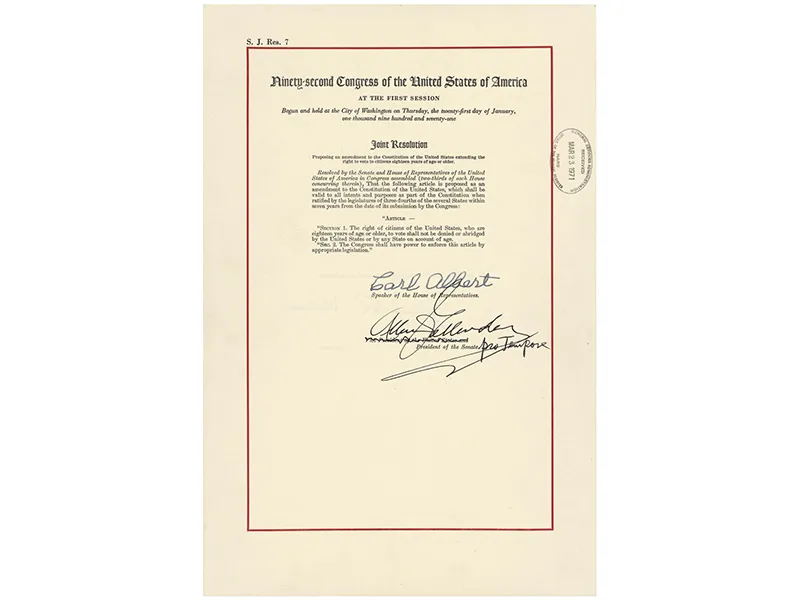
Congress approved the change, but Oregon, Idaho, Texas and Arizona challenged the ruling in front of the Supreme Court as an infringement on states’ rights to manage voting. In Oregon v. Mitchell, the court determined that Congress could pass a change in the voting age at the federal level, but not at the state level.
This decision meant state election officials in nearly every state would need to create and maintain two sets of voter records, resulting in a huge administrative burden and massive costs that many states did not want to take on. And even if they did, it was unlikely that everything could be organized before the 1972 election. This issue helped push the 26th Amendment forward as a viable and necessary fix.
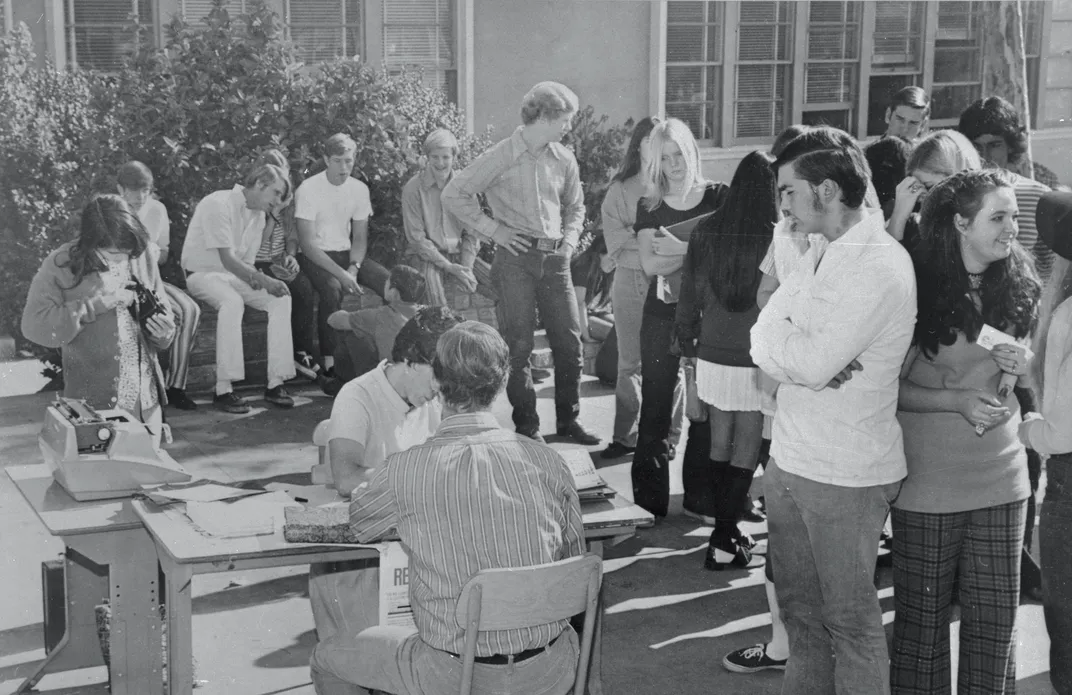
In response, the House and Senate, supported by Nixon, introduced what would become the 26th Amendment in March 1971. Even Celler saw the writing on the wall, telling his fellow House members: “This movement for voting by youths cannot be squashed. Any effort to stop the wave for the 18- year-old vote would be as useless as a telescope to a blind man.” Within an hour of its passage, states began to ratify the proposal. With the necessary two-thirds majority reached on July 1, President Nixon certified the 26th Amendment four days later, saying: “The country needs an infusion of new spirits from time to time… I sense that we can have confidence that America’s new votes will provide what this country needs.”
Following their victory, many of the people involved in the campaign immediately turned their attention to registering new voters in time for the next year’s presidential election. Politicians likewise mobilized to capture the 18-to-21-year-old demographic. Despite widespread assumptions that youth skewed overwhelmingly left, the Nixon campaign created Young Voters for the President, an organizing arm that specifically targeted the conservative “children of the silent majority” who didn’t relate to the more liberal protesters and resented their association with the youth suffrage campaign. Democratic nominee George McGovern assumed youth would overwhelmingly support his anti-war message, and anticipated a 70 percent sweep of the demographic.
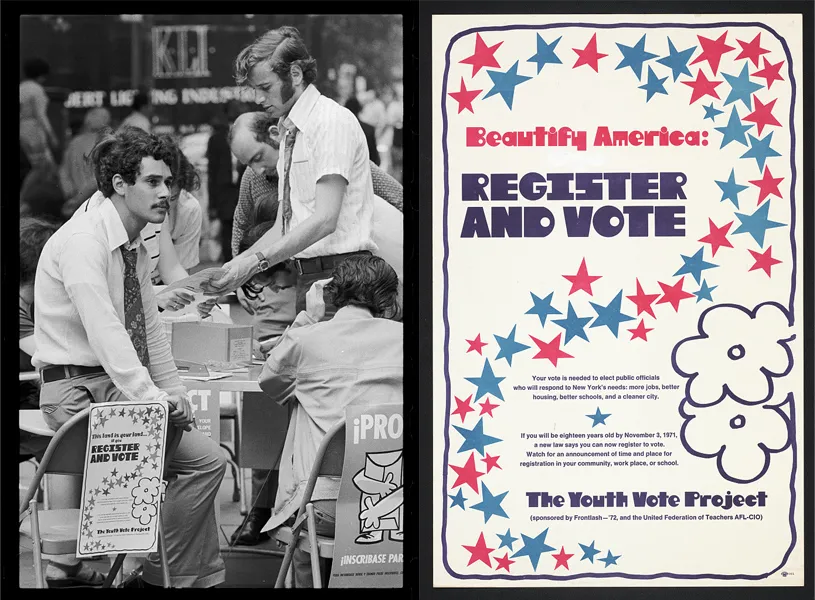
When the ballots were cast, only about half of newly eligible youth voters turned out, and the vote was split between the two candidates. It was a disappointing result for McGovern, and for many of the advocates, who had hoped for a higher turnout.
A few factors influenced the relatively low showing for youth, says Blumenthal. Registration was hampered by complex rules, and the sense among young people that the political system was broken squashed enthusiasm to participate in the election. McGovern, too, lost steam with youth when he started appealing to older, more moderate voters as the campaign wore on.
“Even though young people didn't turn out the way people had hoped in 1972, the threat of them turning out forced politicians to listen to their demands,” says Blumenthal, noting that Nixon pledged to end the draft in 1968 and enacted environmental protections following his victories.
Nixon’s certification of the 26th Amendment “was the culmination of a very public [process] to demonstrate, as much as possible, to young people that older people were ready to listen,” he says. “And to some extent, it was true.”
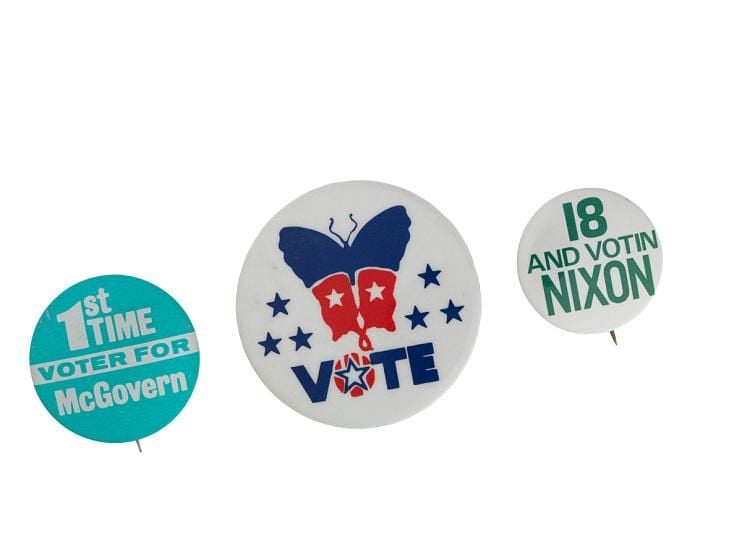
Half a century later, many elements of youth voting look similar to how they did in the 1970s: Younger voters identify as political independents in higher numbers than those in older generations do, and they still face voter registration roadblocks and a lack of understanding around voting laws. According to Quinn, one such barrier is the overcriminalization of youth of color, which can lead to adult felony convictions barring voting for life, fees that must be cleared before voting, and arrest issuances for low-level offenses that can deter would-be voters from coming to polling places. Residency requirements and state ID laws also dampen college students’ ability to cast ballots. Many of these restrictions are being contested across the country.
“Claims that young people do not vote because they are apathetic, or unconcerned about the world around them, fail to appreciate the complexity of the situations they face,” Quinn, Caridad Dominguez, Chelsey Omega, Abrafi Osei-Kofi and Carlye Owens write in the Akron Law Review.
According to the CIRCLE data, youth turnout increased in 2020 by an estimated seven percentage points over the 2016 data, a substantial increase.
Now, a new wave of activists has taken up the mantle of youth suffrage again, this time arguing for an even lower voting age: 16. In some municipalities, such as Takoma Park, Maryland, and Berkeley, California, 16-year-olds can already vote for (respectively) city government and school board seats. Young people are also active in voter registration and mobilization efforts across the country as they fight the immediate crises of climate change, racism and economic inequality. Those spearheading today’s youth suffrage movements can see their own motivations in the words of Philomena Queen, the youth chair of the Middle Atlantic Region of the NAACP, who spoke in front of the Senate Subcommittee on Constitutional Amendments in 1970:
“We see in our society wrongs which we want to make right; we see imperfections that we want to make perfect; we dream of things that should be done but are not; we dream of things that have never been done, and we wonder why not. And most of all, we view all of these as conditions that we want to change, but cannot. You have disarmed us of the most constructive and potent weapon of a democratic system—the vote.”

